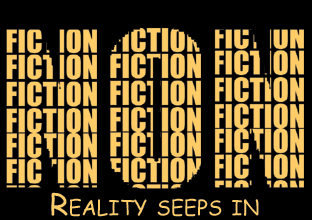
How I Got Into Nonfiction
This is a guest post from Sarah Rettger. Sarah spends her nights selling books (in all formats) at an independent bookstore outside Boston, and her days working on a graduate degree in between Twitter breaks. Follow her on Twitter @SarahRettger.
When I was younger — and generally less suspicious than I am now — there were plenty of times when I wondered if some authority figure was about to take an interest in my library habits. (This was in the days before the USA PATRIOT Act, kids. Back then, it was still a question, not a given.)
The reason? I took full advantage of my library‘s amazing children’s nonfiction collection.
In sixth grade we studied ancient history, and (I’m guessing this was not part of the standard curriculum) my teacher introduced us to Erich von Daniken’s theory that aliens built the pyramids. I was hooked. I headed to the library and plowed through the 000 section, moving from UFO studies to cryptobiology to the Encyclopedia Brown history of espionage, which taught me about Agent Garbo and Operation Mincemeat long before Ben MacIntyre did. I devoured every book they had on ESP and other paranormal phenomena, and that was not a small number.
And I didn’t just check them out once and move on. I have always been a rereader, and that phase was no different. Those Loch Ness Monster books probably made the round trip between the library and my house a half-dozen times.
I didn’t confine myself to that first case of the nonfiction section. A little farther along were the books on the history of fashion (which led me to embrace tie-dye far more enthusiastically than I should have, but also prepared me to drool over the latest Downton Abbey costumes) and rather old books on manners. I’m forever grateful to the librarians who neglected to weed those relics, so that I could mock their outdated gender roles — and then become a total Emily Post fangirl a few years down the road.
Another row or two back I discovered the Everything You Ever Wanted to Know About Puberty section (I think the Dewey classification was something more subtle, like 520). I had checked out every one of those books by the time I was twelve, knew pretty much everything I needed to, and never ended up having The Talk that took on so much importance over in the Juvenile Fiction section.
But at the back of the nonfiction shelves — oh, the biographies. When you see me going on about wanting to marry Alexander Hamilton, know that this was where it started. My library had books on everyone. Militant mini-feminist that I was, I didn’t have much use for the men on the shelves back then, but I couldn’t get enough of the women: Mae West, Susan La Flesche, Mary Lyon, Emma Willard — my heroines tended toward the educated women of the nineteenth century and the rule-breakers of the twentieth.
Many of those books were the sort of pseudo-factual story that wouldn’t pass muster with today’s demand for documentation of everything. Dialogue was made up, scenes from the subject’s formative years were invented entirely, and while there might be a “for further reading” note in the back, they didn’t cite any primary sources. But that didn’t matter to tween me, who just wanted to imagine what it was like to start the first college for women, or find proof that Atlantis was real.
So here’s to that remarkable collection of children’s nonfiction, and to the many people who never batted an eye at what I found in it. (And should the authority figures have any lingering doubts, you made the right call. Now let today’s kids do the same.)









